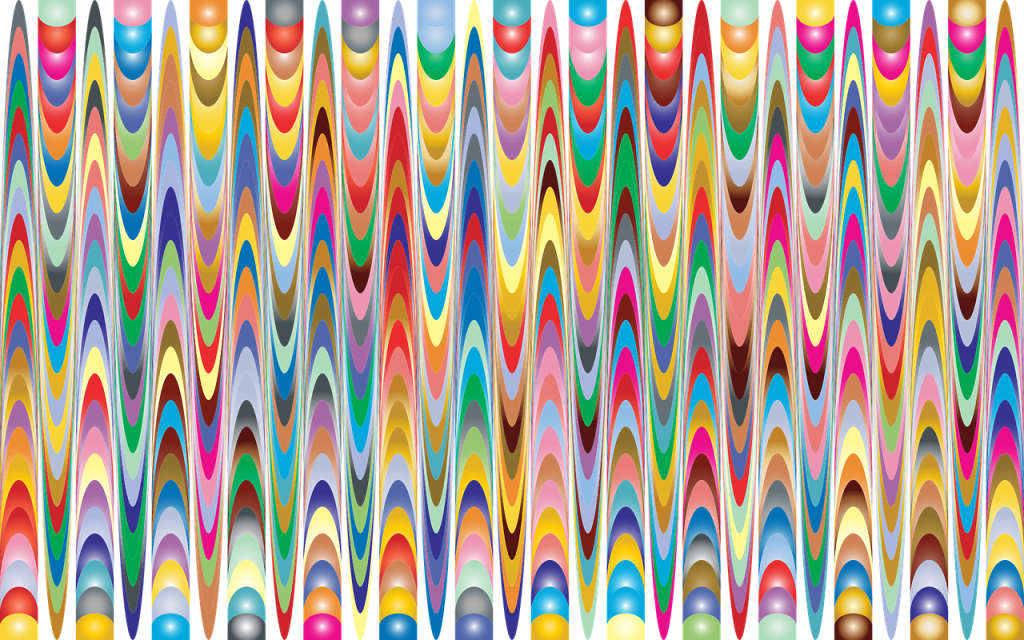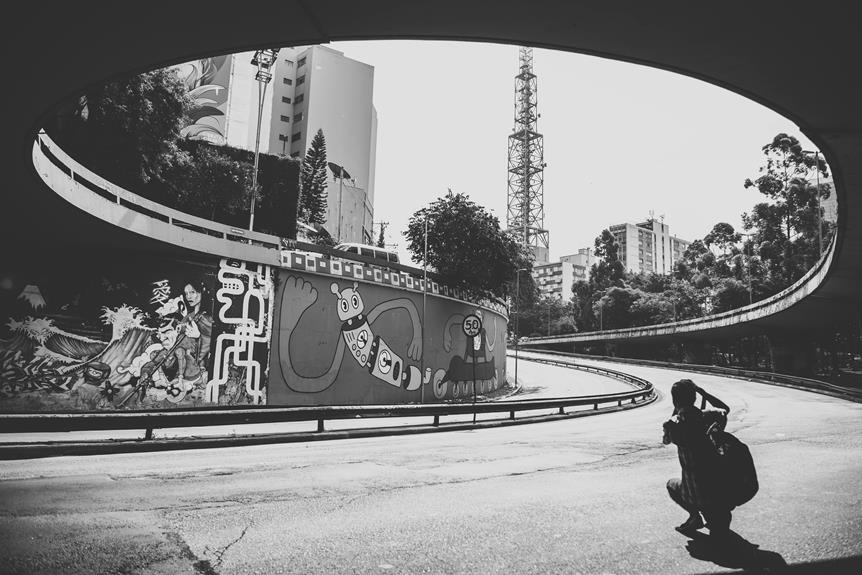Pop Art Background

Pop Art emerged in the 1950s as an answer to the growing consumer culture and mass media frenzy. You see bold colours, graphic elements, and repetitive patterns that mirror advertising, comic books, and everyday objects. Andy Warhol’s iconic Campbell’s Soup Cans and Roy Lichtenstein’s comic strip paintings are prime examples. The movement aimed to democratize art, challenging the divide between high art and popular culture. Its influence spans modern design, from vibrant advertising to playful tech interfaces. If you’re curious about how these elements integrate into contemporary spaces, there’s much more to uncover.
Key Points
- Pop Art emerged in the 1950s, inspired by consumer culture and mass media.
- It features bold colours and graphic elements, often derived from advertising and comic books.
- Artists like Andy Warhol and Roy Lichtenstein used mundane objects to critique societal norms.
- The movement aimed to democratize art and blur the lines between high art and popular culture.
- Pop Art motifs include everyday commercial items and celebrity portraits, reflecting society’s fascination with branding.
History of Pop Art
In the 1950s, Pop Art emerged as a significant artistic movement that directly responded to the burgeoning consumer culture and mass media.
You can trace Pop Art origins to the post-war era when artists began drawing influence from advertising, comic books, and everyday consumer products. This marked a departure from traditional artistic boundaries and introduced bold colours and graphic elements.
The evolution of Pop Art styles saw artists using mundane objects to critique societal norms and elevate them to high art status.
As the movement progressed, it aimed to democratize art, making it more accessible to the public. This period saw Pop Art transform the art world, challenging notions of what could be considered art.
Key Pop Art Artists
Andy Warhol, Roy Lichtenstein, David Hockney, Richard Hamilton, and Claes Oldenburg stand out as pivotal figures whose innovative works defined and propelled the Pop Art movement.
Warhol’s iconic artworks, like the Campbell’s Soup Cans and Marilyn Monroe portraits, utilized screen printing, a key Pop Art technique.
Lichtenstein’s comic book-style pieces, such as ‘Whaam!’, showcased bold lines and primary colours, distinguishing him in influential exhibitions.
Hockney’s vibrant depictions of California lifestyle captured the Pop Art evolution.
Hamilton’s seminal piece, ‘Just what’s it that makes today’s homes so different, so appealing?’, is often cited as the movement’s inception.
Oldenburg’s oversized sculptures of mundane objects, like ‘Giant Three-Way Plug,’ further pushed Pop Art’s boundaries.
Common Pop Art Motifs
Pop Art motifs often draw from the vibrancy of everyday commercial culture, incorporating ubiquitous items like Campbell’s soup cans and Coca-Cola bottles to create a commentary on consumerism. By emphasizing everyday objects and celebrity portraits, artists challenge the boundaries between high art and popular culture. Comic book characters and advertising slogans are also prominent, reflecting society’s fascination with mass media and branding. Bold, vibrant colours and repetitive patterns enhance the visual impact.
| Motif Category | Examples |
|---|---|
| Everyday Objects | Campbell’s soup cans, Coca-Cola bottles |
| Celebrity Portraits | Marilyn Monroe, Elvis Presley |
| Comic Book Characters | Batman, Superman, Wonder Woman |
These elements collectively highlight the pervasive influence of commercial and media landscapes on our daily lives.
Pop Art in Modern Design
Many contemporary designers draw inspiration from the Pop Art movement, infusing their work with its signature vibrant colors and playful themes. You’ll notice Pop Art in advertising through bold graphics and eye-catching visuals that captivate audiences, much like the original movement’s impact. These elements are designed to evoke a sense of fun and nostalgia, making them highly effective in connecting with consumers.
Pop Art in technology also plays a significant role, appearing in user interfaces and app designs that favor bright, engaging aesthetics. By incorporating everyday objects and popular culture references, designers create a visually stimulating experience. This approach pays homage to the Pop Art movement and underscores its lasting influence on modern design practices.
Tips for Using Pop Art Decor
Incorporate pop art decor elements strategically to create a vibrant and engaging living space without overwhelming it.
Start by focusing on pop art colour schemes: use bright, contrasting colours to highlight key areas.
Integrate pop art through accent pieces such as pillows, rugs, or art prints.
Pop art furniture integration can also add flair; mix bold pop art pieces with modern furniture for a contemporary feel.
Consider these tips:
- Accent Walls: A pop art accent wall creates a bold focal point without overpowering the room.
- Mix and Match: Combine pop art elements with modern accessories for a balanced look.
- Personalize: Experiment with different styles, like comic book motifs or iconic pop culture references, to make the space uniquely yours.
Frequently Asked Questions
What Is the Background of Pop Art?
You should understand that Pop Art’s cultural origins lie in the 1950s, reacting to mass media and consumerism. It drew from everyday visual mediocrity, challenging traditional art with bold colors and graphic imagery.
What Are the Main Themes of Pop Art?
You’ll find that pop art’s main themes include consumer culture and celebrity influence. Artists highlight mass production and everyday objects, often infusing their work with irony and satire to comment on society’s obsession with popularity and materialism.
What Are Three Facts About Pop Art?
You should know three key facts about pop art: it draws heavily from celebrity culture, it emphasizes mass production techniques, and it challenges traditional art norms by using everyday imagery and bold colours to make impactful statements.
How Do I Create My Own Pop Art?
To create your own pop art, choose a subject that reflects everyday life. Use digital tools to experiment with bold colour palettes, patterns, and outlines. Incorporate humor or social commentary and draw inspiration from comic book styles and advertisements.
Conclusion
Incorporating pop art into your space offers a dynamic blend of history, vibrant motifs, and contemporary flair. By understanding its roots and key figures, you’ll appreciate the cultural depth it brings.
Recognizing common themes helps you select pieces that resonate with this iconic movement. Modern design embraces pop art’s boldness, making it versatile for various decor styles.
Use these insights to create an engaging, visually stimulating environment that reflects pop art’s enduring appeal.
Author: Jessica Hartley

